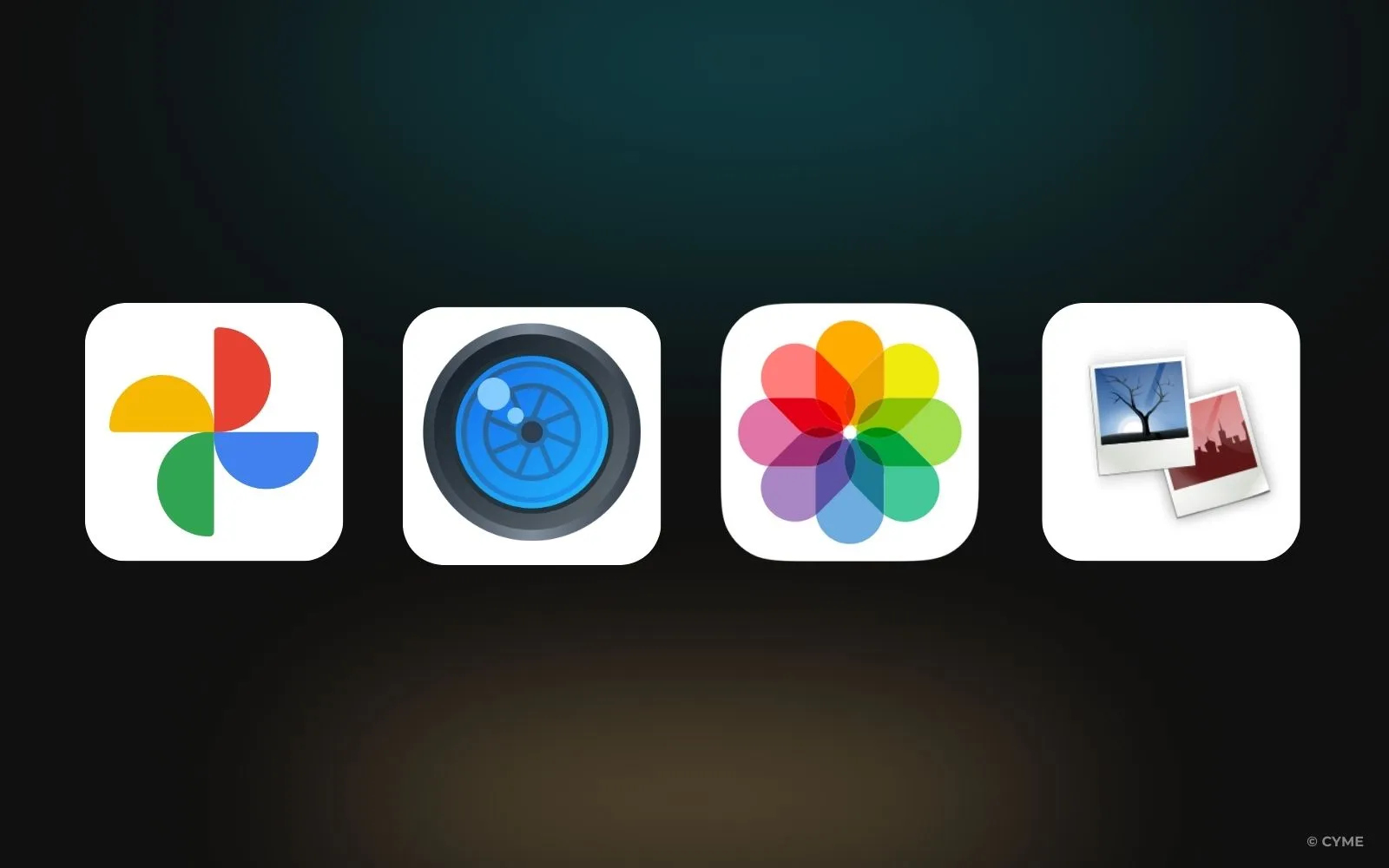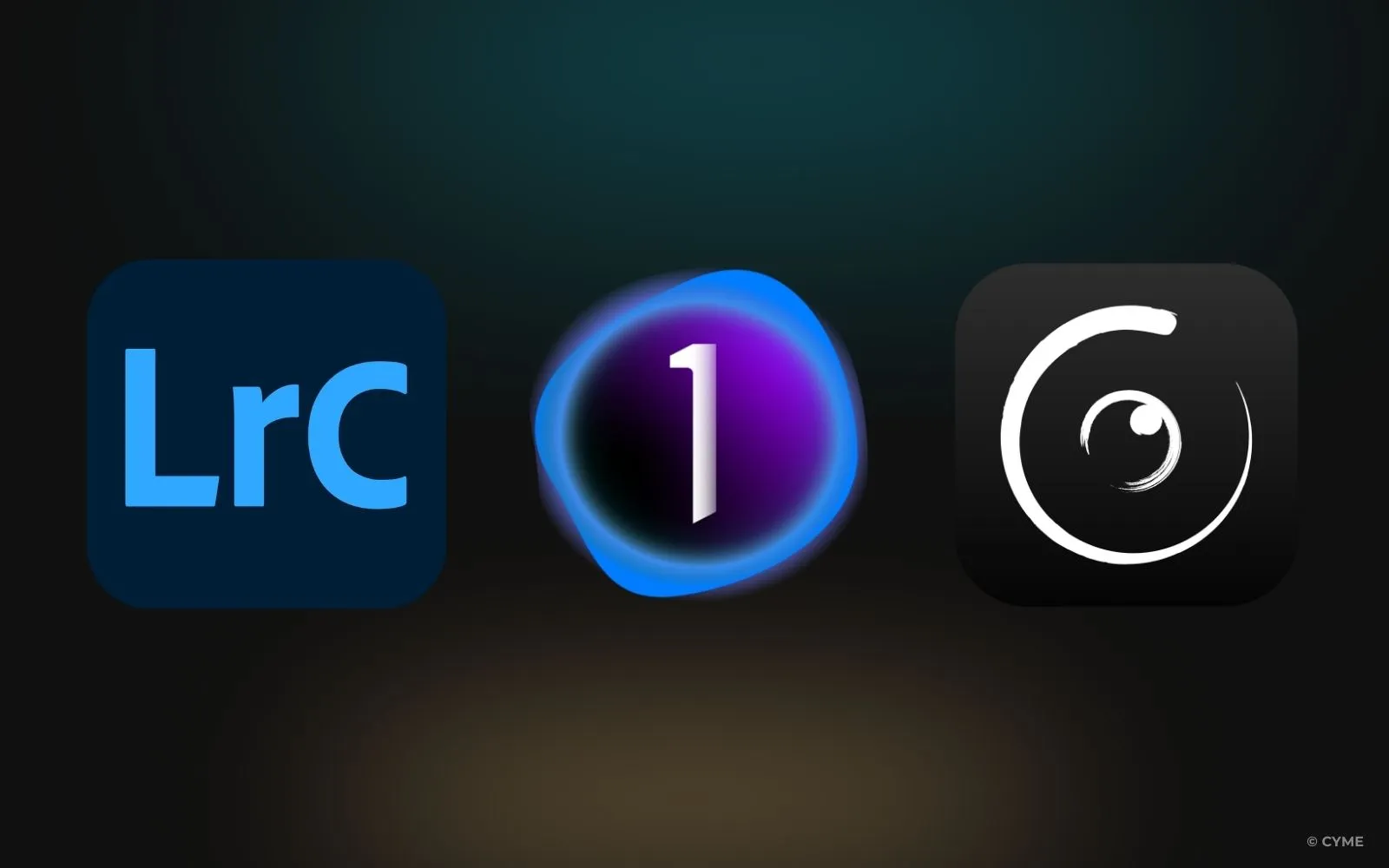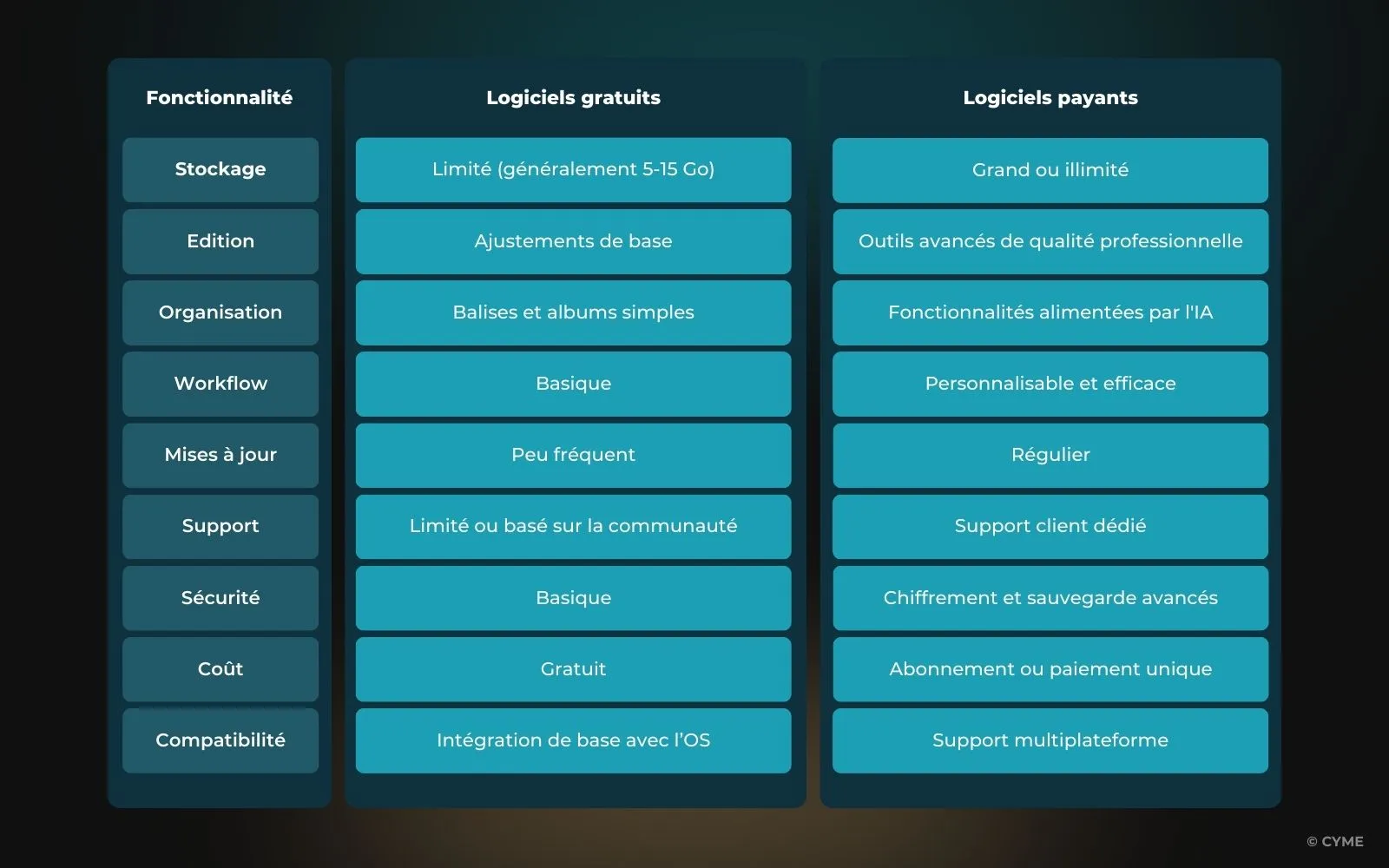Investir dans un bon logiciel de gestion de photos vous fera gagner du temps et de l’argent.
En tant que photographe professionnel, je sais à quel point il peut être difficile de gérer une immense bibliothèque d’images. Au fil des années, les fichiers s’accumulent, créant un désordre chaotique qui complique l’organisation. Retrouver une photo spécifique devient une véritable chasse au trésor, ralentissant votre flux de travail et limitant votre créativité.
C’est là qu’intervient le logiciel de gestion de photos. Ces outils puissants vous permettent d’organiser, d’éditer et de stocker efficacement vos images, vous faisant gagner du temps et vous évitant bien des frustrations. Cependant, avec autant d’options disponibles—gratuites comme payantes—choisir le bon logiciel peut rapidement devenir un casse-tête.
Cet article complet vous aidera à explorer l’univers des logiciels de gestion de photos et à faire le meilleur choix en fonction de vos besoins, vous permettant ainsi d’optimiser votre flux de travail et de vous concentrer sur l’essentiel : votre créativité.
L'importance des logiciels de gestion de photos pour chaque photographe

En tant que photographe, j’ai vécu le chaos de la gestion de milliers de photos. Entre les images en double, les fichiers mal étiquetés et les métadonnées manquantes, le manque d’organisation peut rapidement devenir frustrant. Trier manuellement ses photos prend un temps précieux qui pourrait être consacré à des projets créatifs.
Les logiciels de gestion de photos dédiés offrent un espace centralisé pour toute votre bibliothèque d’images. Ces outils proposent une gamme de fonctionnalités qui facilitent considérablement la gestion de vos photos.
Organisation
Les logiciels de gestion de photos offrent une approche structurée pour organiser votre bibliothèque d’images, facilitant ainsi la recherche de photos lorsque vous en avez besoin. Vous pouvez classer vos images selon divers paramètres, tels que la date, le lieu ou des tags personnalisés, ce qui vous permet de trier et de retrouver rapidement vos photos en fonction de critères précis.
Grâce à des fonctionnalités comme la reconnaissance faciale, vous pouvez même regrouper automatiquement les photos d’une même personne ou d’un événement, sans avoir à les étiqueter manuellement. Cela vous évite de créer des arborescences de dossiers interminables qui deviennent difficiles à gérer avec le temps.
Edition
De nombreux outils de gestion de photos intègrent une gamme de fonctionnalités d’édition, allant des ajustements de base comme le recadrage et la correction de l’exposition aux options plus avancées telles que l’édition par calques, l’étalonnage des couleurs et la réduction du bruit.
Ces outils d’édition intégrés vous permettent d’améliorer vos photos directement dans le logiciel, vous faisant gagner du temps et évitant les allers-retours entre différentes applications. Que vous soyez débutant ou professionnel, ces fonctionnalités vous offrent la possibilité d’affiner vos images sans quitter votre bibliothèque de photos.
Stockage
Le stockage cloud est une fonctionnalité essentielle dans les logiciels de gestion de photos, offrant une sauvegarde sécurisée et fiable pour vos images. En stockant vos photos dans le cloud, vous pouvez y accéder depuis n’importe quel appareil disposant d’une connexion internet, garantissant ainsi que vos fichiers sont toujours disponibles lorsque vous en avez besoin.
Le stockage cloud protège également vos photos contre la suppression accidentelle, les pannes de périphériques ou d’autres problèmes inattendus, vous apportant ainsi tranquillité d’esprit et garantissant que vos images précieuses sont sûres et récupérables à tout moment. Pour mieux comprendre les différences entre le stockage cloud et local, n’oubliez pas de consulter cet article sur les logiciels de gestion de photos basés sur le cloud et locaux.
Récupération
Retrouver des photos spécifiques dans une vaste bibliothèque peut être chronophage, mais les logiciels de gestion de photos simplifient ce processus grâce à des fonctionnalités de recherche avancées. Des outils comme le marquage par mots-clés et la géolocalisation permettent de rechercher des images en fonction de termes descriptifs ou de lieux.
De plus, la reconnaissance d’images alimentée par l’IA peut automatiquement taguer et classer les photos en fonction de leur contenu, vous permettant ainsi de retrouver facilement vos images sans avoir à parcourir manuellement toute votre collection.
Efficacité
En intégrant à la fois des fonctionnalités d’organisation et d’édition, les logiciels de gestion de photos permettent d’optimiser l’ensemble du processus de post-traitement et de gestion des images. Plutôt que de jongler entre plusieurs logiciels ou de trier manuellement vos photos, vous pouvez tout gérer en une seule plateforme : organiser, éditer et sauvegarder vos images.
Cela vous fait non seulement gagner du temps, mais améliore également votre flux de travail, vous permettant ainsi de vous concentrer davantage sur vos projets créatifs plutôt que sur des tâches administratives.
Aperçu complet des logiciels gratuits de gestion de photos

Fonctionnalités clés des logiciels gratuits de gestion de photos
1. Outils d'organisation de base
Les outils d’organisation de base permettent aux utilisateurs de créer des structures de dossiers simples et d’appliquer des tags à leurs photos. Ces outils offrent généralement des options de tri par date, nom ou catégories personnalisées, aidant ainsi à maintenir un minimum d’organisation dans les bibliothèques de photos.
Certains logiciels, comme Google Photos, proposent une catégorisation basique alimentée par l’IA, permettant de trier les images par lieu ou d’identifier des objets sur les photos.
2. Fonctionnalités d’édition
Les logiciels gratuits de gestion de photos proposent des outils d’édition de base pour effectuer des ajustements essentiels. Les utilisateurs peuvent recadrer, faire pivoter et redimensionner leurs photos, ainsi qu’appliquer des corrections colorimétriques simples et des filtres.
Ces outils conviennent aux retouches rapides, mais ils manquent de fonctionnalités avancées telles que le traitement des fichiers RAW ou les workflows d’édition non destructifs.
3. Cloud Storage
Les solutions gratuites de gestion de photos offrent généralement entre 15 et 20 Go de stockage cloud, permettant la sauvegarde en ligne et l’accès depuis plusieurs appareils. Cette capacité de stockage convient aux utilisateurs occasionnels, mais un tri manuel ou une mise à niveau payante peut être nécessaire à mesure que la bibliothèque de photos s’agrandit.
4. Intégration avec les systèmes d’exploitation existants
De nombreux outils gratuits de gestion de photos sont conçus pour s’intégrer parfaitement aux systèmes d’exploitation populaires. Ils sont souvent préinstallés sur les appareils, comme Apple Photos sur Mac/iOS ou Google Photos sur Android, garantissant ainsi un accès facile sans configuration supplémentaire.
Cette intégration permet aux utilisateurs de gérer leurs photos en toute simplicité sur plusieurs plateformes.
5. Sauvegarde automatique
Les logiciels gratuits de gestion de photos incluent souvent des fonctionnalités de sauvegarde automatique pour protéger contre la perte de données. Ces outils enregistrent périodiquement les photos sur un stockage cloud ou un disque local, garantissant ainsi la sécurité des images sans intervention manuelle.
Cette fonctionnalité offre une tranquillité d’esprit aux utilisateurs soucieux de préserver leur collection de photos.
6. Fonctionnalité de recherche basique
La fonctionnalité de recherche basique dans les logiciels de gestion de photos permet aux utilisateurs de retrouver rapidement des images spécifiques grâce à des paramètres de recherche simples. Ils peuvent rechercher des photos en saisissant des noms de fichiers, ce qui facilite l’identification des correspondances exactes ou partielles dans leur bibliothèque.
Les recherches basées sur la date et les tags aident également les photographes à affiner leur collection efficacement, rendant la récupération des images plus simple et rapide.
Avantages des logiciels gratuits de gestion de photos
1. Économique
2. Interface conviviale
3. Accessibilité immédiate
4. Intégration avec le système d’exploitation
Les logiciels gratuits de gestion de photos sont généralement conçus pour s’intégrer parfaitement aux environnements natifs des systèmes d’exploitation, garantissant une utilisation fluide sur différents appareils et plateformes. Cette intégration permet un accès facile aux fichiers, une synchronisation efficace et une expérience utilisateur homogène.
5. Support communautaire

Limitations des logiciels gratuits de gestion de photos
1. Limites de stockage
2. Outils d’édition limités
3. Organisation basique
4. Capacités IA limitées
5. Restrictions de synchronisation
6. Présence potentielle de publicités
7. Prise en charge limitée des fichiers RAW
8. Absence de prise de vue connectée
Options de logiciels gratuits populaires à considérer

1. Google Photos
Si, comme moi, vous prenez souvent des photos sur le vif, Google Photos est un choix évident. Ce n’est pas seulement un excellent outil de sauvegarde automatique (ce qu’il fait d’ailleurs à merveille), mais sa vraie force réside dans son organisation intelligente par IA. Il est capable de regrouper les images par visages, lieux ou même événements spécifiques, sans que vous ayez à intervenir.
J’ai personnellement trouvé cela très utile pour retrouver cette photo de coucher de soleil prise il y a trois ans, simplement en tapant « plage » dans la barre de recherche. De plus, ses outils d’édition intégrés, comme Magic Eraser, sont pratiques pour effectuer des retouches rapides lorsque l’on manque de temps.
Seule limite : avec 15 Go de stockage gratuit, j’ai rapidement atteint la capacité maximale plus vite que prévu.
Pour en savoir plus sur la façon dont Google Photos peut simplifier la gestion de vos images, cet article de 01net pourrait vous être utile.
2. Apple Photos
Pour les amateurs de Mac, celui-ci est une évidence. La synchronisation fluide entre tous vos appareils donne l’impression que votre bibliothèque photo vous suit partout, que vous soyez sur votre iPhone, iPad ou Mac. Son interface élégante facilite la navigation dans vos images, et ses outils d’édition sont parfaits pour des retouches rapides sans être trop complexes.
Ce qui m’a vraiment marqué, c’est sa capacité à retrouver des photos spécifiques en fonction de la date, du lieu ou même des visages, sans avoir à fouiller dans une multitude de dossiers. Si vous êtes déjà plongé dans l’écosystème Apple, son intégration naturelle en fait un choix évident pour gérer vos images au quotidien.
3. Digikam
Celui-ci s’adresse à ceux qui aiment vraiment plonger dans les moindres détails de la gestion de photos. DigiKam est, selon moi, un véritable trésor caché, surtout pour les photographes qui travaillent avec des fichiers RAW ou qui apprécient d’avoir un contrôle précis sur les métadonnées.
Étant un logiciel open-source, il est développé par des passionnés qui veulent offrir un maximum de flexibilité dans l’organisation des bibliothèques d’images. Certes, il demande un temps d’apprentissage un peu plus long comparé à des outils comme Google Photos, mais l’investissement en vaut la peine : le niveau de personnalisation est impressionnant. Pour quelqu’un qui gère une vaste collection de photos, DigiKam fonctionne comme un assistant personnel qui ne laisse jamais échapper le moindre détail.
4. Shotwell
Les utilisateurs de Linux vont être ravis : Shotwell est un incontournable si vous cherchez un outil léger, rapide et axé sur l’essentiel. Il est souvent recommandé pour son approche minimaliste de l’organisation et de l’édition de photos. Ici, pas d’IA sophistiquée ni de fonctionnalités surchargées—juste un logiciel fiable qui fait son travail efficacement.
Pensez outils basiques : recadrage, ajustement des couleurs, importation en masse… Pour ceux qui aiment garder leur flux de travail simple et efficace, Shotwell séduit par sa fonctionnalité directe et sans superflu.
Aperçu complet des logiciels payants de gestion de photos

Fonctionnalités clés des logiciels payants de gestion de photos
1. Outils d’édition avancés
Les logiciels payants de gestion de photos offrent des capacités d’édition sophistiquées, notamment l’édition non destructive, qui préserve les fichiers originaux, la prise en charge des calques pour des ajustements complexes, ainsi que des outils de retouche colorimétrique de niveau professionnel.
Ces fonctionnalités permettent aux photographes de réaliser des modifications précises et avancées sur leurs images sans compromettre leur qualité.
2. Stockage cloud étendu
3. Organisation assistée par IA
Les technologies avancées d’IA intégrées aux logiciels payants permettent la reconnaissance faciale automatique, la détection d’objets et le marquage intelligent pour caractériser ses photos. Ces fonctionnalités simplifient considérablement le processus d’organisation, facilitant la catégorisation et la recherche d’images au sein de vastes collections pour les photographes.
4. Workflow non linéaire
Les solutions payantes offrent des outils efficaces de tri des images, des systèmes de notation personnalisables et des espaces de travail adaptables. Cette approche non linéaire permet aux photographes de travailler avec plus de flexibilité, en passant facilement d’une étape du flux de travail à une autre selon leurs besoins, améliorant ainsi leur productivité globale.
5. Intégration avec d’autres logiciels
L’intégration fluide avec d’autres logiciels professionnels, comme Adobe Photoshop, est une fonctionnalité clé des logiciels payants de gestion de photos. Elle permet une transition sans heurts entre différentes applications, offrant aux photographes la possibilité d’utiliser des outils spécialisés sans interrompre leur flux de travail.
Qu'est-ce que les métadonnées des photos ?
Comment l'IA aide-t-elle dans la gestion des photos ?
Comment puis-je sauvegarder mes photos en toute sécurité ?
6. Traitement des fichiers RAW
Les logiciels payants excellent dans la gestion et l’édition des fichiers RAW, en préservant une qualité d’image et un niveau de détail optimaux. Cette capacité est essentielle pour les photographes professionnels qui doivent exploiter au maximum les informations contenues dans leurs images lors du post-traitement.
7. Gestion des métadonnées
8. Prise de vue connectée
9. Gestion des versions
Avantages des logiciels payants de gestion de photos
1. Outils de qualité professionnelle
2. Scalability
À mesure que les besoins des photographes évoluent, les logiciels payants offrent la flexibilité d’augmenter la capacité de stockage et d’accéder à des fonctionnalités supplémentaires. Cette scalabilité garantit que le logiciel peut gérer des bibliothèques de photos plus volumineuses et des flux de travail plus complexes, sans nécessiter de changement de plateforme.
3. Mises à jour régulières
4. Support dédié
Les utilisateurs de logiciels payants de gestion de photos bénéficient d’un service client professionnel, de tutoriels complets et de ressources d’apprentissage étendues. Ce réseau de support aide les photographes à résoudre rapidement les problèmes et à maximiser l’utilisation des capacités du logiciel.
5. Personnalisation
6. Outils de collaboration
7. Préréglages et traitement par lots
8. Recherche avancée

Limitations des logiciels payants de gestion de photos
1. Coût
2. Courbe d'apprentissage
3. Exigences système
Logiciels payants populaires

1. Adobe Lightroom
Lightroom est la référence en matière d’édition et d’organisation de photos professionnelles, largement considéré comme l’outil incontournable pour les photographes de tous niveaux. Ses capacités d’édition non destructives signifient que chaque ajustement, qu’il s’agisse de corrections de couleurs ou de modifications de l’exposition, laisse le fichier original intact, préservant ainsi l’intégrité de vos photos.
L’une des caractéristiques remarquables de Lightroom est sa capacité à gérer efficacement de grandes bibliothèques de photos grâce à des outils organisationnels avancés tels que les tags par mots-clés, les notations et les collections intelligentes.
2. Capture One
Capture One a acquis une réputation parmi les professionnels grâce à ses outils de colorimétrie inégalés et à ses fonctionnalités spécialisées adaptées à la photographie en studio. Son éditeur de couleurs avancé permet aux utilisateurs de manipuler des teintes spécifiques avec une précision incroyable, ce qui en fait un choix idéal pour les photographes qui doivent perfectionner les tons de peau ou créer des profils de couleurs personnalisés.
Pour les photographes travaillant en prise de vue connectée, où l’appareil photo est directement relié à un ordinateur, Capture One offre une vue en temps réel des photos au fur et à mesure de leur prise, permettant un retour immédiat et des ajustements pendant la séance.
3. Peakto
Peakto est une solution de gestion de photos de pointe, conçue spécifiquement pour les utilisateurs macOS qui gèrent plusieurs bibliothèques de photos. Contrairement à d’autres outils qui se concentrent sur l’édition ou l’organisation de base, Peakto excelle en tant que plateforme centralisée qui connecte différentes sources de photos, telles que les catalogues Lightroom, Apple Photos et les disques externes, dans une interface unifiée. Cela élimine les tracas liés au passage d’une application à l’autre ou à la recherche à travers des systèmes de stockage disparates. Ce qui distingue Peakto, c’est son analyse de photos alimentée par l’IA, qui permet des capacités de recherche avancées.
Gratuit vs Payant : Différences clés

Comment choisir le bon logiciel de gestion de photos
Considérez vos besoins
Sélectionner le logiciel de gestion de photos approprié est une décision importante qui nécessite une réflexion approfondie sur plusieurs facteurs.
Tout d’abord, évaluez combien vous êtes prêt à investir dans les outils de gestion de photos, car le coût peut varier considérablement entre les options gratuites et payantes. Alors que les logiciels gratuits peuvent suffire pour les photographes occasionnels, ceux ayant des bibliothèques plus grandes ou des besoins professionnels devront peut-être allouer un budget pour des fonctionnalités plus avancées.
Ensuite, identifiez les fonctionnalités essentielles pour votre flux de travail. Cela inclut l’évaluation des capacités d’édition, telles que la prise en charge des fichiers RAW, l’édition non destructrice et le traitement par lots, ainsi que les systèmes de balises qui vous aideront à organiser et à retrouver vos images efficacement. Les besoins de stockage sont un autre facteur clé à considérer. Si vous avez une grande collection de photos ou prévoyez de l’agrandir, assurez-vous que le logiciel offre suffisamment de stockage cloud ou qu’il supporte des options d’extension du stockage local.
L’interface utilisateur doit également être en adéquation avec votre flux de travail. Recherchez des outils offrant des designs intuitifs et faciles à naviguer. Une interface bien organisée vous fera gagner du temps et réduira la frustration, surtout lorsque vous gérez de grandes quantités de photos.
De plus, la compatibilité avec vos outils et appareils existants est essentielle. Par exemple, si vous utilisez d’autres logiciels créatifs comme Adobe Photoshop ou Capture One, choisissez un logiciel de gestion de photos qui s’intègre parfaitement à ces programmes pour optimiser votre flux de travail global.
Enfin, prenez en compte l’évolution future de votre bibliothèque photo. À mesure que votre collection grandit, vos besoins en logiciels peuvent changer. Choisissez une solution qui pourra évoluer avec votre bibliothèque et offrir des fonctionnalités avancées telles que l’organisation assistée par IA, la gestion des métadonnées ou des fonctions de recherche intelligente
Gardez à l’esprit qu’investir dans des outils plus robustes dès maintenant pourra vous faire économiser du temps et de l’effort à long terme, à mesure que vos exigences en matière de gestion de photos augmentent.
Lors du choix entre un logiciel gratuit ou payant, prenez en compte vos objectifs à long terme. Les options gratuites peuvent être un excellent point de départ, mais leurs limitations risquent de freiner votre productivité à mesure que votre bibliothèque photo grandit.
Investir dans un logiciel payant pourrait vous faire gagner du temps et vous éviter des frustrations à long terme, en offrant des outils avancés et des options de stockage robustes pour soutenir l’évolution de votre parcours photographique.
Rappelez-vous, le meilleur logiciel de gestion de photos est celui qui correspond à votre vision créative, à votre flux de travail et à vos aspirations de croissance. Que vous choisissiez une option gratuite ou payante, assurez-vous qu’il vous permette de vous concentrer davantage sur la capture de moments et moins sur leur gestion.
Conseils pour prendre une décision
Pour prendre une décision éclairée lors du choix d’un logiciel de gestion de photos, il est essentiel d’utiliser les ressources à votre disposition. De nombreuses options payantes proposent des périodes d’essai gratuites, vous permettant d’explorer leurs fonctionnalités et d’évaluer leur adéquation à votre flux de travail sans engagement financier. Pendant ces essais, prenez le temps d’expérimenter les outils d’organisation, les capacités d’édition et l’interface utilisateur du logiciel pour déterminer si elles répondent à vos besoins.
En plus de l’expérimentation personnelle, recueillir les avis d’autres photographes peut vous fournir des perspectives précieuses. Lire des critiques sur des plateformes réputées peut vous éclairer sur la satisfaction des utilisateurs, les problèmes de performance et la fiabilité globale du logiciel. Participer à des communautés de photographes, telles que des forums ou des groupes sur les réseaux sociaux, vous permet de poser des questions et d’apprendre des expériences d’autres personnes ayant utilisé le logiciel que vous envisagez.
En combinant l’expérience directe grâce aux essais gratuits avec les connaissances acquises grâce aux retours de la communauté, vous pourrez faire un choix éclairé et bien équilibré qui correspondra au mieux à vos besoins en gestion de photos.
Quel est le meilleur choix pour vous ?
Le choix entre un logiciel gratuit ou payant de gestion de photos dépend de vos besoins, de votre budget et de vos objectifs. Les outils gratuits offrent accessibilité et simplicité, tandis que les options payantes proposent des fonctionnalités avancées et une scalabilité. Prenez le temps d’évaluer vos besoins, d’essayer les versions d’essai gratuites, et d’explorer les avis des utilisateurs pour prendre une décision éclairée.
Si vous recherchez un outil polyvalent qui combine organisation assistée par IA, intégration fluide et fonctionnalités de qualité professionnelle, je recommande vivement Peakto. C’est un excellent choix pour les photographes, quel que soit leur niveau.









